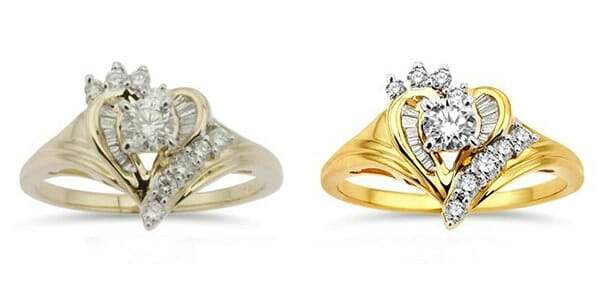Jewelry retouching is a process of enhancing and improving the appearance of jewelry items in photographs. It involves various techniques to make the jewelry look more attractive, including adjustments to colors, brightness, sharpness, and removing imperfections. Here are some basic techniques for beginners in jewelry retouching:
Image Cleaning
When retouching jewelry, start by cleaning up the image to eliminate any distracting elements. This includes removing dust, scratches, smudges, or any other imperfections that may have been captured during the photography process. Use the Healing Brush tool or the Clone Stamp tool in software like Adobe Photoshop to carefully remove these blemishes without affecting the jewelry itself. Pay close attention to preserving the intricate details of the jewelry while eliminating distractions.

Color Correction
Jewelry pieces often require color adjustments to enhance their visual appeal. Begin by adjusting the color balance and tone of the image to make the jewelry appear more vibrant and attractive. Software tools like Curves, Levels, or Color Balance in Photoshop allow you to modify the color channels individually or make global adjustments to achieve the desired results. Experiment with these tools to find the right balance that best showcases the jewelry’s colors.
Enhancing Gems and Stones
Gemstones are a significant feature in many jewelry items, and they require special attention during retouching to make them sparkle and stand out. Use techniques like Dodge and Burn to selectively lighten or darken specific areas of the gemstones, creating contrast and depth. This technique can be particularly useful for bringing out the brilliance and refractive qualities of the stones. Additionally, you can employ the Sharpen tool to enhance the details and clarity of the gemstones.
Reflections and Highlights
Jewelry often contains highly reflective surfaces, such as polished metal or gemstones. Capturing these reflections accurately in photographs can be challenging. However, in the post-processing stage, you can add or enhance reflections and highlights to make the jewelry appear more polished and radiant. Use tools like the Brush tool or the Gradient tool with a low opacity setting to create subtle reflections and highlights that mimic natural lighting conditions. Be careful not to overdo it, as realism is key.
Removing Background
To isolate the jewelry item, it’s often necessary to remove the background. This allows for flexibility in using the jewelry in various compositions or placing it on different backgrounds. Selecting the jewelry accurately is crucial to achieving a clean and seamless result. Employ selection tools like the Pen tool or the Quick Selection tool to carefully outline the jewelry, and then apply a layer mask to remove the background. This technique ensures that the focus remains solely on the jewelry itself.
Detail Enhancement
Jewelry pieces often possess intricate patterns, engravings, or tiny gem settings that require extra attention during retouching. Use tools like the Spot Healing Brush tool or the Clone Stamp tool to fix any imperfections or inconsistencies in these details. Pay close attention to maintaining the sharpness and clarity of the smaller elements, ensuring that they appear clean and well-defined in the final image.
Adjusting Shadows and Highlights
Fine-tuning the shadows and highlights of the jewelry helps to create a more balanced and three-dimensional look. Adjusting the tonal range can significantly impact the overall lighting and the perception of depth in the image. Utilize adjustment layers such as Shadows/Highlights or Curves to control the intensity of shadows and highlights selectively. This technique allows you to enhance the overall lighting and bring out the jewelry’s contours and shape more effectively.
Consistency and Realism
One crucial aspect of jewelry retouching is to maintain consistency in lighting, colors, and overall style throughout the image. Avoid excessive retouching that results in an unnatural appearance. The goal is to enhance the jewelry’s beauty while still representing it realistically. Continuously assess your work to ensure that the retouching adjustments you make align with the original intent of the photograph while enhancing the jewelry’s visual appeal.
Remember, practice is key to mastering jewelry retouching. Experiment with different techniques and continue to refine your skills. Study professional jewelry photographs to gain inspiration and learn from the work of experienced retouchers.
